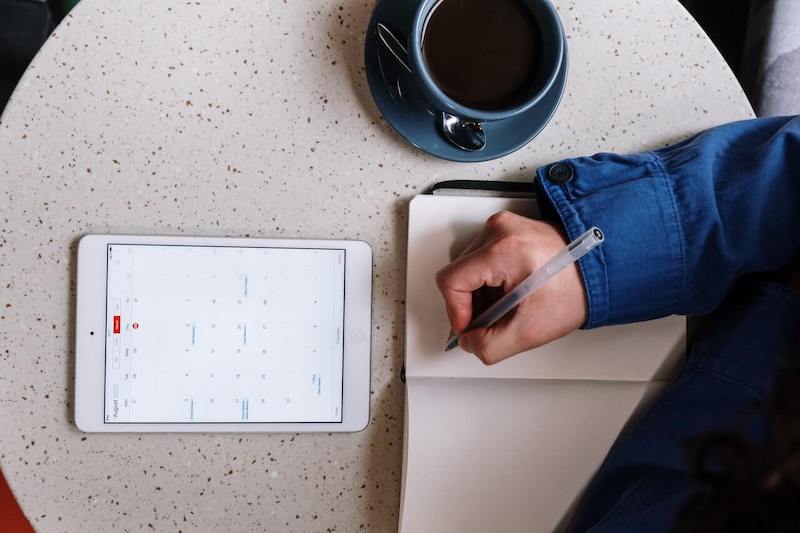Before 2020, only 6% of the workforce regularly worked from home, and nearly 75% had never worked from home at all. By the middle of that year, over one-third of the U.S. workforce was working remotely full-time. When it comes to places like Singapore, work from home seems to be the gold mine. There, individuals with responsibilities that make it impossible to hold a 9-5 job (stay-at-home moms), have turned to remote jobs and this might be the best thing they did.
In January 2021, a survey found that a whopping 83% of employers felt that their transition to a work-from-home model had been successful. While most companies will likely return to the office in some capacity, thousands of workers will probably still have the option to be remote for at least part of the workweek.
Remote workers are more productive than people who work in an office full-time, but still there seem to be some barriers. Remote workers are more likely to be distracted by family members, neighbors, errands, or even their TV!
If you’re one of them and you enjoy remote work, you may be wondering: What are the best strategies that help remote workers succeed? Let’s explore the top seven best strategies for the remote modern workforce.
The 7 Best Strategies
We get it. You want to keep high productivity while working remotely, so you can keep working remotely—be that from the comfort of your home or a coworking space.
Don’t worry, you can use these seven tips and tricks to maximize your focus, productivity, and work-from-home hustle.
1. Keep a Routine
Routine is essential to training our bodies and minds to be productive. The daily habits of highly successful people are studied and written about in thousands of books and articles. Developing a consistent routine helps you focus when you need to be focused while also keeping you sane!
Performance coaches often recommend starting your day with the same morning routine. Give yourself time to connect with your mind and body, use a personal mantra to boost your confidence, and always get physically ready.
A few key things to work into your daily routine are:
- Get dressed every morning. Psychologists coined the term “enclothed cognition,” which essentially means that what we wear affects how we think! Getting dressed in something other than sweats is crucial for productivity.
- Communicate with people you live with. This also means communicating boundaries and your schedule for the day, so they know when to let you work in peace.
- Shower! Take care of habitual hygiene like showering, brushing your teeth, and fixing your hair.
- Eat breakfast. Breakfast is an important meal for mental and physical fuel throughout the day.
- Set your goals for the day and use a schedule to give boundaries to your time. More on that in a moment.
2. Start Your Job Every Day At The Same Time & At The Same Place
Some of us probably love the flexibility of working from home. And while flexibility is a great benefit, you still should adhere to a few intelligent boundaries. Starting your work at the same time and in the same place, every day can do wonders for your focus and productivity.
Just getting started in the morning can be difficult at home. You don’t have the transitional time of a commute or the office setting to help you kick into gear. So, at home, a great way to get into work mode is to simply build a habit by starting at the same time every day.
Studies also show that waking up at the same time every day can both help your cognition and your sleep quality.
Starting in the same place every day also triggers your body and brain to know it’s time for work. We don’t want to be working from our bedroom, location is essential.
3. Make Use of Calendar Blocking

You know that feeling when you look up and suddenly realize you’ve spent three hours on one task and you’re still not done with it? When we don’t have boundaries set for our tasks, they can often drag on and on.
Did you know there’s a term for this? “Parkinson’s Law” states that “work expands so as to fill the time available for its completion.” Calendar blocking is setting a limit on that time. Productivity coaches use calendar blocking to help people move through responsibilities in their day.
To use calendar blocking effectively, think through your productivity during any given day—when are you most focused, when do you prefer to have meetings, etc. Then block out every minute of your eight-hour workday with blocks of time for specific tasks. Seeing those blocks of time helps your brain stay focused because you know it will eventually end.
With calendar blocking, you take control of your day, and it’s harder for distractions to steal your time. Batch together similar tasks like emails or creative thinking. And once it’s on your calendar, your colleagues will be more hesitant to schedule meetings during those blocks.
4. Take Frequent Productivity Breaks
Our brains aren’t wired for eight straight hours of focus. Calendar blocking is a way to understand your mental productivity and when you are best at what types of tasks. But another important thing to realize is that you also need mental breaks.
We are most productive when we take breaks. Scientists have found that the human brain tends to work in a loop of focus. We can focus on a single task for roughly an hour, and then our brains switch to lower activity or need a new focus. When you allow yourself a short 10-15 minutes break every hour, it helps your brain reset. You’ll be more productive for more of the day.
To get a healthy “brain break,” schedule a short break every hour and try the following:
- Go outside! We need sunshine regularly to stay mentally healthy. Get a short “green break” by taking a walk outside, especially on sunny days.
- Drink some water. Some of us like to drink coffee all day, but making sure to stay hydrated can help our physical and mental health.
- Chat with someone in your home. Making those personal connections is vital for our emotional health. You can also set better boundaries around your focused time so people in your home know when they can access you.
5. Remove Distractions from Your Workspace
This one might seem obvious. If distractions are a problem, get rid of them! But all too often, people don’t take the proper steps or remove the right distractions.
The first important step is to identify your triggers. When you catch yourself being distracted, trace it back to the moment you left your task. What triggered the change? For many of us, it’s our phones. A few other things might be:
- Trips to the kitchen for snacks
- Facing a window on a busy street
- Shopping or entertainment websites
You can move distractions both physically and digitally. If your phone is a distraction—and you don’t need it for the task at hand—put it on silent and leave it in a different room. If your TV is a distraction, try to find a workspace that’s in a different room. Where you set up your workspace is a key way to keep distractions to a minimum. And, of course, use digital tools to minimize distractions. You can use software to block access to certain websites or apps during specific times.
6. Track Your Time

While distractions are one problem, losing yourself in a task can also become an issue. Keep track of how much time you’ve spent on a specific work project, and stop when you need to move on.
While it may seem counterintuitive, stopping mid-task is important in the long run if you have other things you need to be doing. You can also come back to that task later with a renewed focus and fresh ideas.
Of course, follow your knowledge of yourself in this. If you know you absolutely need to finish a task – or you’re on the verge of completing something – go for it. But in general, tracking your time will help you stay productive and your focus fresh.
Tracking time also helps set a boundary between your work and personal life. When work time is over, shut it down and move on to the next thing. Working late into the evening will ultimately hurt your personal life and your ability to stay happy and focused at work.
7. Don’t Forget to Take Care of Yourself in the Process
Self-care certainly improves productivity. Studies show that people who practice self-care have higher cognition and focus at work. When you practice good self-care, you’re in a better mental space; your body and mind are healthier, you have self-confidence, and you are more capable of good decision-making.
Here are a few self-care practices you can try:
- Exercise daily
- Meditate, pray, or get in touch with yourself in some way
- Read
- Take a walk
- Plan time with friends and loved ones
- See a therapist or coach
- Eat well and drink lots of water
- See a doctor regularly
Prioritizing self-care is key to a long and productive life.
Final Thoughts
Remote work can be incredibly rewarding, flexible, and productive. But we all know that our homes also provide a myriad of distractions!
Fortunately, you can follow specific tips to maximize productivity and mental health at the same time. Use our seven best strategies above to boost your focus when you’re working from home.






